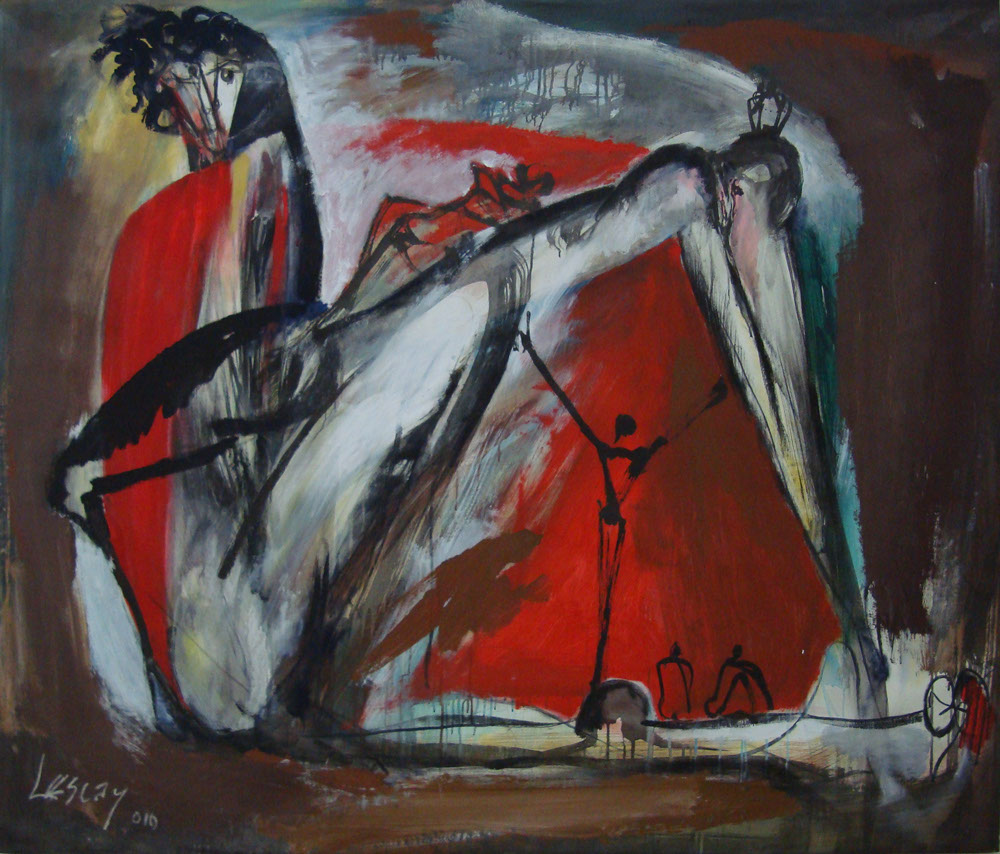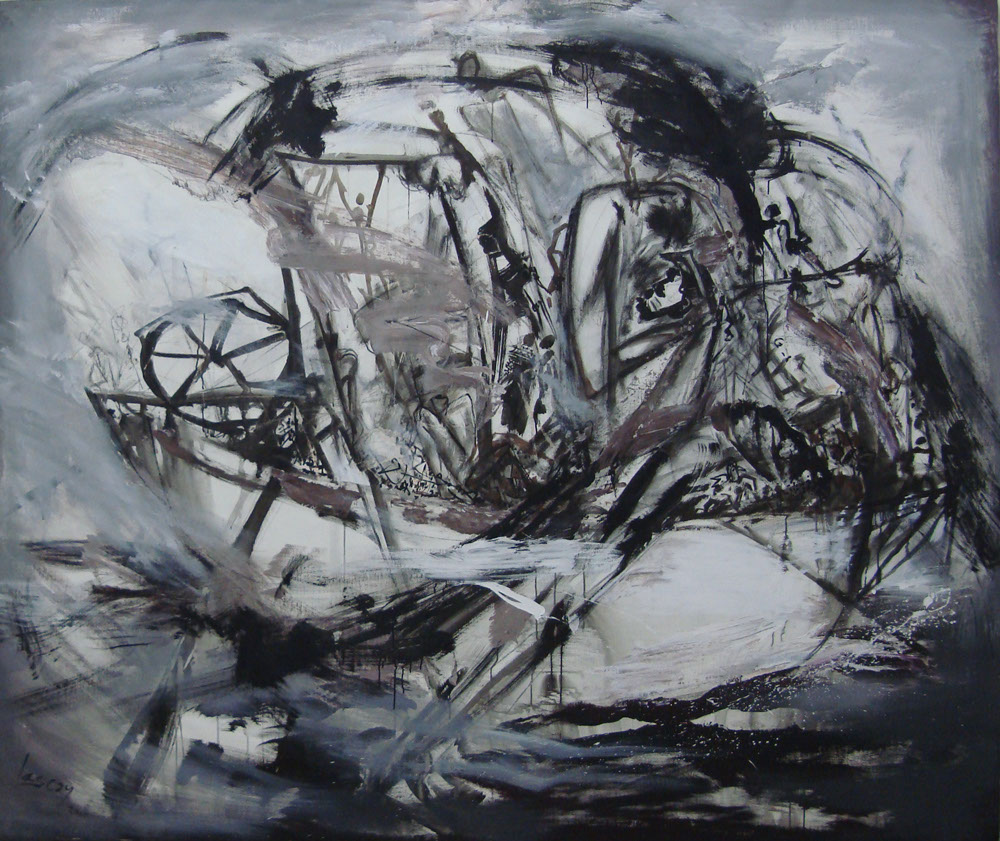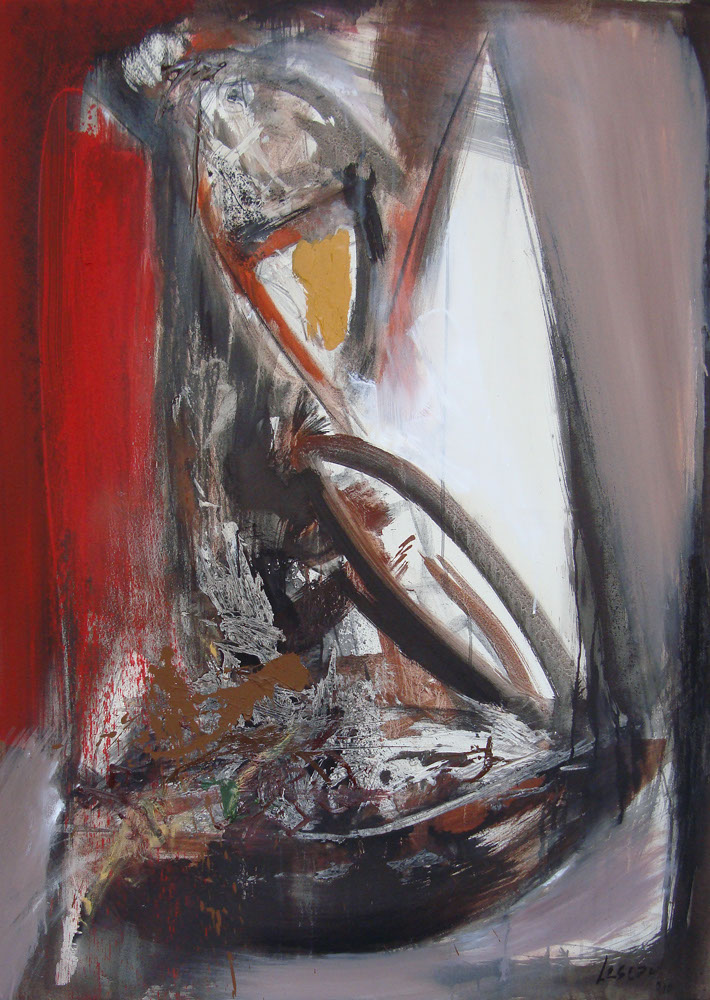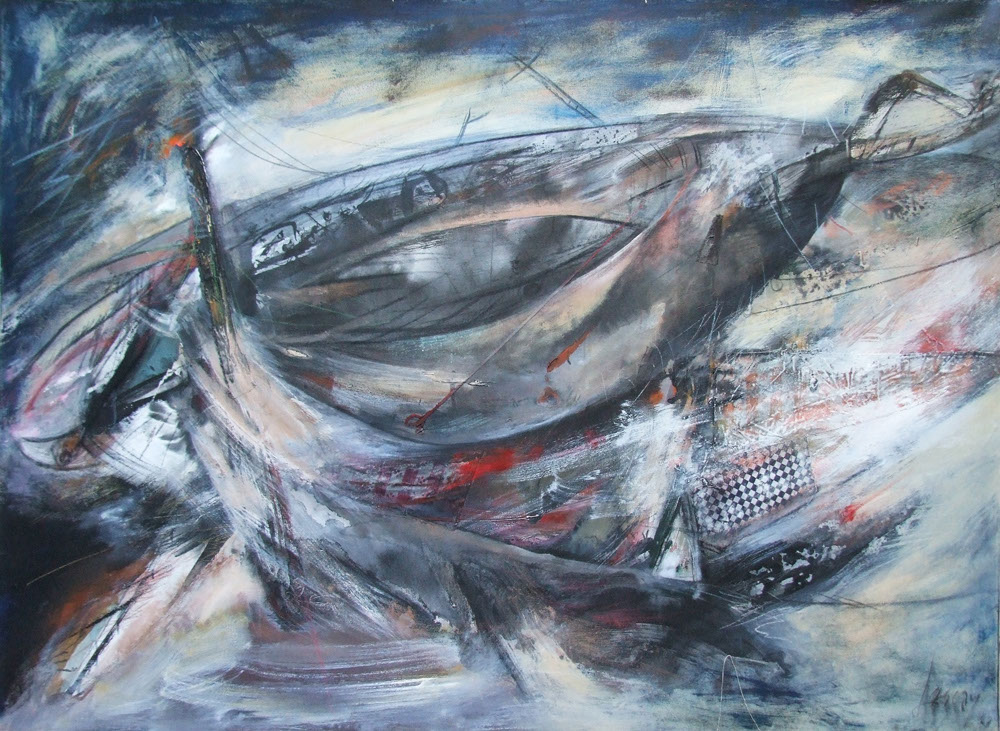ALBERTO LESCAY MERENCIO
Estudió en la Escuela de Artes Plásticas de Cubanacán y posteriormente se graduó en la especialidad de escultura en Academia de Bellas Artes Repin, en la antigua Unión Soviética. Una vez graduado regresó a su ciudad natal y se vinculó a instituciones como la Dirección de Artes Plásticas y Diseño del Ministerio de Cultura. En 1978 comenzó a dirigir el Taller Cultural Santiago.
Inicia su labor plástica en el Taller Cultural con exposiciones de dibujo, pintura y ensamblajes escultóricos. Paralelamente dirigió la actividad de esta institución, organizando encuentros culturales y conversatorios con artistas de las artes plásticas provenientes de distintas provincias del país. En estos encuentros, los creadores realizaban esculturas, cerámicas, ensamblajes, y pinturas que eran después exhibidas en los espacios del Taller Cultural.
En los dibujos sobre cartulina de Alberto Lescay de finales de los años setenta podía percibirse una obra cercana al tachismo, a la línea del dibujo caligráfico del cual emergían sugestivas alusiones figurativas desplegadas como un aspecto temático y formal, a las cuales fue incorporando paulatinamente la densidad del material y la riqueza cromática. En la escultura monumentaria conmemorativa, Lescay retoma la imagen de los personajes destacados de la gesta libertaria, en una concepción escultórica marcada por la figura del héroe, bajo la lectura de la épica revolucionaria.
Alberto Lescay Merencio (Santiago de Cuba, 1950) studied in the School of Fine Arts in Cubanacán, and later graduated with a specialization in sculpture from the Repin Academy of Fine Art, former Soviet Union. Upon graduation he returned to his native country and joined such institutions as the Directorate of Fine Arts and De- sign of the Ministry of Culture. In 1978 he became the director of the Santiago Cultural Workshop.
He began his work in the Cultural Workshop with exhibitions of drawing, painting, and sculptural assemblages. At the same time he directed the activities of the Workshop, organizing cultural meetings and interactions among visual artists from various provinces of the country. In these events the artists produced sculptures, ceramics, assemblages, and paintings that were later exhibited in the Cultural Workshop galleries.
In Alberto Lescay’s drawings on cardboard from the late 1970s one could perceive an approach similar to Tachisme, with a calligraphic style of drawing from which suggestions of representational allusions emerged, arranged as a formal thematic element to which denser material and chromatic richness were gradually introduced. In monumental commemorative sculpture, Lescay takes up the image of the distinguished participants in the struggle for independence, in a sculptural style marked by the figure of the hero, as interpreted by the epic of the Revolution.
desktop view
proyecto y curaduría:/project concept and curator: Alejandro de la Fuente
web design: Los Fieras
Agradecemos a la Fundación Ford por su apoyo para este proyecto /
/ Thanks to Ford Foundation for their support for this project"






















